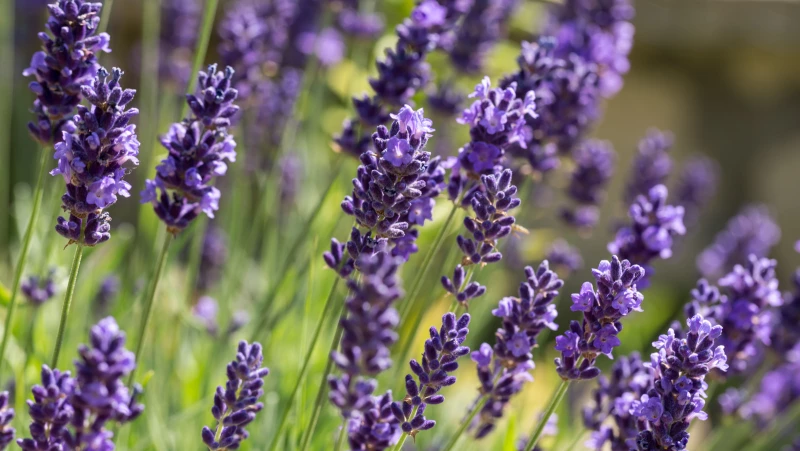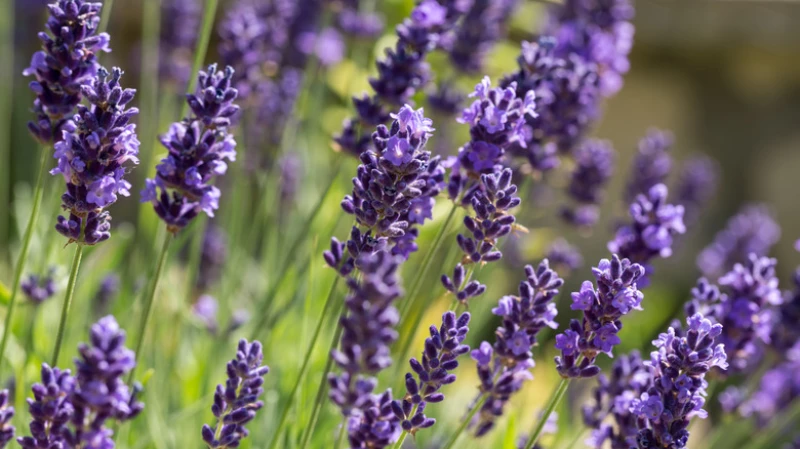Lavender (Lavandula spp.) is an aromatic, bushy shrub native to the Mediterranean. Belonging to the Lamiaceae family, this perennial has gray-green, needle-like foliage and spikes of small, tubular, highly fragrant flowers in shades of purple, blue, pink, and white. Lavender flowers attract a range of beneficial insects to the garden, which can act as natural predators to many common pests — so it's no wonder lavender is a valuable addition to numerous companion plant pairings. Common parsley (Petroselinum crispum) is one plant that you should be growing with lavender to reap the benefits of this natural pest-repellent.
Parsley is an herbaceous, hardy biennial in the Apiaceae family. This pungent culinary herb has vibrant green, deeply divided leaves that grow in rosettes. In its second growing season, parsley produces umbels of green to yellow flowers. Although a parsley plant typically completes its life cycle in two years, it is more commonly grown as an annual, harvested for its flavorful leaves in the first year.
Why should you grow parsley with lavender?
When parsley is planted alongside lavender, it can help to deter pests that may harm the lavender plant. The strong scent of parsley acts as a natural repellent for insects, protecting both plants in the process. Additionally, parsley attracts beneficial insects that can contribute to a healthier garden ecosystem. This symbiotic relationship between parsley and lavender not only benefits the plants but also enhances the overall beauty and functionality of your garden.
Parsley and lavender are a harmonious duo in the garden, not just for their visual appeal but also for their pest-controlling properties. Aphids, the bane of parsley plants, can be effectively managed by introducing natural predators like ladybugs, lacewings, and hoverflies attracted by lavender flowers. These beneficial insects help keep aphid populations in check, maintaining a healthy balance in your garden ecosystem. Additionally, the strong scent of lavender can confuse pests, making it harder for them to locate their host plants, including parsley. This aromatic interference can further protect your herbs from unwanted visitors, ensuring a thriving and beautiful garden.
When planted together, parsley and lavender create a visually striking contrast with their vibrant green and silvery-purple foliage. While parsley naturally deters some pests like the asparagus beetle, lavender remains largely trouble-free, making it an ideal companion plant. By strategically pairing these two herbs, you not only enhance the aesthetic appeal of your garden but also promote a natural defense system against common pests, allowing your plants to flourish in a sustainable and eco-friendly way.
For optimal growth, parsley is best cultivated from seed. Once the final frost has passed, sow the seeds directly in the desired planting area, cover them lightly with soil, and ensure they remain adequately moist. Typically, parsley seeds will sprout within two to five weeks. Once the seedlings have grown sufficiently, they can be thinned out to a final spacing of 10 to 12 inches. On the other hand, while it is possible to germinate lavender seeds, these plants are more commonly propagated from cuttings. During the summer, take cuttings from the parent lavender plant and plant them in damp, sandy soil under a cold frame. After about a year, the rooted cuttings can be transplanted.
Both lavender and parsley thrive in full sun, although parsley can tolerate partial shade. They both do well in well-drained soil, but lavender prefers soil that is low in nutrients, sandy, or gravelly with minimal water retention. In contrast, parsley prefers nutrient-rich, moist soil. If planting in sandy soil, mix in organic matter like compost for the parsley. For lavender in richer soil, incorporate compost along with sand, perlite, or gravel before planting. When growing these plants together, keep in mind that lavender prefers to dry out between waterings, while parsley prefers consistent moisture. Water parsley at the base to avoid overwatering the lavender roots, or consider growing parsley in containers alongside lavender plants.








